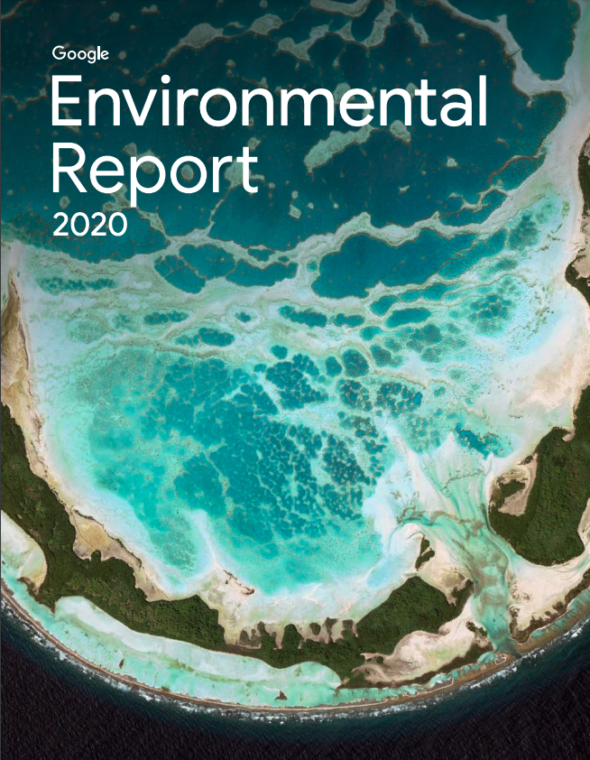Once upon a time, businesses could focus on profitability above all else.
Not any more: modern companies are expected to care about making the world better. They’re expected to serve their communities, listen to their customers, take public stances (and action) on important issues, value and support employees, work for sustainability, and respond to current events.
CSR (corporate social responsibility) programs are one way businesses are meeting this mandate. And standout programs addressing social and environmental issues are most often the result of thoughtful CSR strategies.
Whether you’re new to CSR or looking to refine existing initiatives, understanding the ins and outs of CSR strategy is a prerequisite for creating successful programs with lasting impacts. The new “business as usual” demands smart social responsibility—are you ready to meet the challenge?
What is CSR strategy?
Why have a CSR strategy?
Best practices for creating a CSR strategy
What is CSR strategy?
CSR strategy is the comprehensive plan companies and funders use to design, execute, and analyze their corporate social responsibility initiatives. It includes specific focus areas, program design, promotion and communication approaches, and evaluation procedures.
Most companies with thriving CSR initiatives use strategy to build and monitor their programs; a few of these companies also share their strategy publicly. Nestle is a great example, offering detailed insight into their brand’s approach (called “Creating Shared Value”) that includes long-term goals for serving individuals, families, communities, and the planet, as well as measurement procedures and transparent performance and reporting.
Some companies also release an annual corporate responsibility report which is another useful way for you to see what a CSR strategy can look like. Google’s 2020 Environment Report includes priorities, company mission, performance targets, and detailed analysis in five key focus areas.
Why have a CSR strategy?
In the world of CSR, it’s especially prudent to look before you leap.
This is because successful CSR initiatives are intricate, complex, and require demonstrable impact. They’re also public-facing (and potentially brand-damaging when done poorly). And they offer a host of business benefits you might miss out on by failing to plan.
A well-crafted CSR strategy can help you:
Keep everything organized
Great CSR initiatives involve lots of people, multiple goals, tons of data, and countless responsibilities. Your CSR strategy is an opportunity to get everything in order and prepare to stay on top of all the details.
Improve impacts
According to Deloitte’s third annual global survey of more than 2,000 C-suite executives at companies with societal impact goals, the presence of comprehensive strategy directly correlated with greater success (measured by innovation, growth, and employee acquisition).

Protect your brand reputation
Launching a corporate responsibility initiative without proper foresight is a big risk—that’s because your CSR program will be a public-facing endeavor with multiple stakeholders and partners who expect follow-through. Strategic planning can reduce the possibility that your company will gain a reputation for big talk and no action, which can ultimately harm your bottom line.
Take full advantage of CSR program benefits

CSR has a host of potential benefits for your company. A successful corporate responsibility initiative will benefit your community and serve your employees. It will also improve your brand image, attracting new talent and increasing customer loyalty. Ultimately, these outcomes can contribute to revenue and drive your company’s growth.
In order to reap the full business benefits of CSR, you’ll want a strategy that’s brand-aligned, well-researched, responsive, partnership-driven (at all levels), and constantly evolving in pursuit of positive impacts everyone can feel good about.

Best practices for creating a CSR Strategy
Understanding the role and value of a CSR strategy is an important first step.
Now, how do you create and develop a CSR strategy that gets results? There are seven key tactics for strategic planning that will help improve the outcomes of your business’s CSR activities.
1. Link to company values
Whereas CSR was once seen as a peripheral approach to boosting business performance and legitimacy, today’s best CSR initiatives are squarely brand-aligned and central to operational strategy.
Connecting CSR to business strategy is increasingly a corporate best practice, as evidenced by the 181 CEO’s from brands like Amazon, Citigroup, and Ford who signed Business Roundtable’s latest Statement of Purpose, indicating a commitment to “to lead their companies for the benefit of all stakeholders—customers, employees, suppliers, communities, and shareholders.”
What it looks like to align your CSR strategy with your brand, core competencies, and operational strategy, will be different for every company.

WarnerMedia’s Access Writers Program is a great example of a CSR initiative that clearly links back to company values: WarnerMedia is a media corporation focused on diverse entertainment whose latest program seeks to improve the access marginalized community members have to professional opportunities in television.
2. Get insights from your various stakeholders
You’ll want to develop a strategic plan for CSR inspired by what your customers, employees, and community members care about. You might also seek inspiration from what’s worked for other brands already. Here’s how:
Poll your customers
The creation of a CSR strategy is a great excuse to connect with your customer base. Build a short, easy to access poll to collect the following information:
- Which environmental and social issues matter most to your customers?
Design your poll in alignment with your brand. For example, if you sell custom T-shirts, are customers most interested in your sustainability, supply chain, dedication to labor and human rights, or donations to kids in need? Focused questions will lead to more actionable results.
- What do customers know about your current giving and initiatives?
If you have run programs in the past or currently engage in CSR, how well did you communicate about them? Are your initiatives known for success?
- What associations do customers have with your brand?
This is a great opportunity to collect data about your business’s image, which you can try to influence in your new CSR strategy.
To help boost participation, consider offering an incentive to customers who complete your poll, such as a discount or entry into a drawing.
Collect employee feedback
Your CSR strategy doesn’t move without your employees. Start by determining your employees’ preferences and using that information to help build your overall strategy.
A survey is a great tool to collect this important information, combining multiple-choice and open-ended questions.

As an example, for your T-shirt company, you might have employees select between three brand-aligned volunteer opportunities followed by an opportunity for open feedback. This approach will you help you get the targeted data you need and also help employees feel heard and valued.
Assess community needs
What “community” looks like is unique for every business. Taking time to research and consider what your community needs is a great first step towards building the partnerships your CSR program will need to succeed.
Community Tool Box offers great suggestions for understanding community needs and resources, with methods that can be combined, depending on the extent of data you’re looking to connect.
3. Borrow great strategy
Your CSR strategy doesn’t have to reinvent the wheel. Spend time exploring where other businesses have succeeded in their sustainability, charitable giving, and employee engagement, for example. Don’t worry about being derivative: your strategy will necessarily be unique because your brand is unique and so are the people you care about and listen to.
One way to find brands doing the best CSR is via reports like “America’s Most Responsible Companies” from Newsweek and Statista—and congratulations to HP, Cisco, and Dell for top success in three focus areas: environment, social, and corporate governance.
Harvard Business School’s Baker Library offers a comprehensive list of social responsibility ratings and reports for companies. Of particular interest is Fortune’s “Change the World” list—you’ll find PayPal and Zoom in the top 10 for 2020.
Many companies have aligned their CSR activities in some way with the UN’s 17 Sustainable Development Goals (SDGs) that include issues like poverty, hunger, education, gender equality, and action around climate change. Chevron’s corporate sustainability program, for example, clearly lays out how the company is addressing every SDG, and Target includes an SDG index in their 2020 corporate social responsibility report.
4. Establish internal buy-in
You’ll need your team’s support, enthusiasm, and dedication to make your social responsibility program thrive. Engage employees early in the strategy process by being responsive and inclusive.
Respond to team values
Once you’ve assessed what your employees care about most and where they want the company to focus, put this data to work.
It probably won’t be possible to incorporate everyone’s feedback in your strategy, but at the very least, share your findings with the group. Your team will enjoy learning about what their colleagues value.
Use the information you’ve collected to identify top areas of interest and common suggestions for your CSR strategy. Try to actively pursue at least one employee-sourced initiative every quarter or fiscal year, with formal plans for addressing additional issues in the future.
Involve employees in strategy-building
Research shows that shared leadership and employee-empowerment have a number of benefits, including increased team effectiveness, a stronger sense of community, improved employee perceptions of management, higher levels of employee satisfaction, and less burnout.
That data combined with evidence that corporate social responsibility boosts employee motivation and increases employee engagement makes sharing the planning of your program with staff a natural win-win.
Whether you establish an employee-led committee or include employee representatives in planning sessions, be sure employees are actively engaged and aligned with your CSR visions and values, missions and goals, and on-the-ground initiatives.
5. Build external partnerships
There’s already good work going on in the communities you’re looking to empower. Seek out the organizations and individuals doing this work early in your CSR strategy development process.
Many businesses are already reaping the value of partnership-driven CSR. This list from Donorbox offers examples of 14 major brands, including Adidas, IKEA, Apple, and BMW, that have partnered with community nonprofit organizations to better meet their CSR goals.
Community organizations will have the knowledge and experience to put your brand’s funding, sponsorship, or employee volunteerism, for example, to the best use. As philanthropic leader Edgar Viallanueva recently advised, “You shouldn’t feel that you need to recreate what’s already in place. Find organizations that have established relationships with grassroots communities and trust them to get the money to the right people. These bridge organizations often have the relationships and trust, but lack sufficient capital.”
Approach community partnerships with humility and take a learning stance—what do partner organizations need most and how can your business help? In addition to deep listening, be sure you’re establishing authentic relationships with partners. Sustainable and equitable partnerships (as opposed to shallow partnerships for the sake of PR) require that community members hold actual decision-making power, especially regarding campaigns that will directly affect them.
6. Be clear and transparent
Once you’ve tackled brand-alignment, stakeholders’ concerns (including customers, employees, and community members), and partner-driven strategy, it’s time to distill this wealth of information into a clear communication plan.
Get specific about goals and outcomes
Your CSR strategy should be as clear and specific as possible for a few reasons:
- A clear strategy helps keep everyone on the same page
- The more focused your goals are, the easier it will be to assess if you’ve met them
- Clarity reflects positively on your brand’s commitment to corporate social responsibility, demonstrating rigor and care
Aim for precise language, numbered goals (each communicated in a single sentence if possible), key strategies and initiatives for meeting each goal, and measurement tactics for assessing progress towards each goal. Be sure to include your mission, vision, and partners.
Campbell’s Soup provides a great example of clarity and synthesis in its corporate responsibility strategy—especially this goals chart which lists target objectives alongside current progress displayed numerically and graphically.
Make a communications plan
Your CSR strategy shouldn’t be a secret. Think through how you’ll share this information internally and externally to foster enthusiasm, boost stakeholder engagement, and enhance accountability.
Your CSR strategy should include your plan for regularly and publicly discussing your CSR initiatives—via your website, social media, newsletters, email updates, reports, and even press releases.
Sharing high-level corporate strategy publicly can help generate interest in your CSR programs. It also indicates transparency and accountability—you’re sharing your plan because you intend to follow through and be accountable.
Use the same principles for sharing your strategy that you will to talk about your active and completed CSR campaigns, including these considerations adapted from the EMG group:
- Objectives: What do you want to accomplish with your CSR communication plan?
- Audience: Who will you communicate with?
- Subjects and key messages: What will you tell your audience about?
- Timescales: When will you communicate about CSR?
- Channels: Where will you communicate with your audience?
- Feedback: How will your audience be able to engage with you?
7. Learn, respond, and improve
In the world of CSR, there is always room for improvement, because CSR is about people and people are dynamic. Our needs change and so does the world we live in.
Accordingly, your CSR strategy won’t be complete without a plan for learning, adjustment, and growth—or as Global Giving puts it, the opportunity to “Listen, Act, Learn. Repeat.”
Plan for reporting and feedback
Data and feedback collection should be an essential part of your CSR strategy. Don’t wait for an initiative to finish to consider how you’ll assess outcomes—planning ahead will help ensure your whole strategy is aligned with what you hope to achieve and how you’ll demonstrate progress.
You also shouldn’t wait until the end of a campaign to begin your learning process. Establish a timeline for collecting information at regular intervals throughout your initiative.
There are plenty of ways to collect data and feedback, including interviews, surveys and questionnaires, observational data, focus groups, public forums, oral histories, or some combination of these. Plan to use the tools that make the most sense for your CSR initiative.
Whichever method you choose, be sure your strategy involves connecting with all relevant groups and stakeholders. What results did you achieve among community members and where could you improve? How did employees feel about your CSR program and what suggestions do they have going forward? Were customers interested in your campaign?

Your plan for measuring CSR performance should include how you’ll collect information and from whom, how you’ll assess the data, how you’ll share your findings, and how you’ll incorporate suggestions for improvement.
Be responsive to learning and to the moment
Your CSR strategy shouldn’t be iron-clad. It should evolve in response to new insight and data. Think of your strategy as a working, living document that can and should continue to improve, even mid-campaign, as necessary.
Ready to meet the moment with smart CSR?
Submittable’s social impact platform can help you manage initiatives and amplify impact, easily.
As an example, the events of 2020 forced businesses to reconsider their existing CSR programs. Many companies chose to pivot in response to COVID-19 and movements for racial justice. The publicity around these shifts, including critiques of hollow brand statements, underscored the importance for socially responsible companies of clearly linking action (via CSR) to rhetoric.
According to Mark Horowitz, CEO of Moving Worlds, global events have resulted in a tipping point for CSR, wherein business leaders are making bigger promises without changing operations to support their proposals. More than ever, he argues, companies must respond to the moment and take real action: “The next 10 months will define the CSR space for the next 10 years … CSR leaders within companies have the opportunity to right the position of corporations in society.”
While it’s vital to stay responsive, be wary of altering key goals and measurement tactics before you’ve had time to accurately assess them. Not only do you open your company up to critique for empty promises, but change doesn’t happen overnight and long-term objectives require longer-term measurement.
As Neil Buddy Shah, Managing Director at GiveWell, shared in a recent panel on impact data, you risk good ideas failing when organizations run an impact evaluation that is too rigorous too early.
Time for action: Bring your CSR strategy to life
A thoughtful CSR strategy requires time, thought, and teamwork to build. Make the best use of your efforts with tools that help transform your vision into action and results, faster.
CSR software can connect your business to important causes while dramatically reducing the time it takes to oversee your corporate giving program. Manage corporate grants and scholarships, coordinate employee volunteers and giving programs, facilitate community sponsorships, and much more. We’d love to walk you through the platform—sign up for a free demo today.



